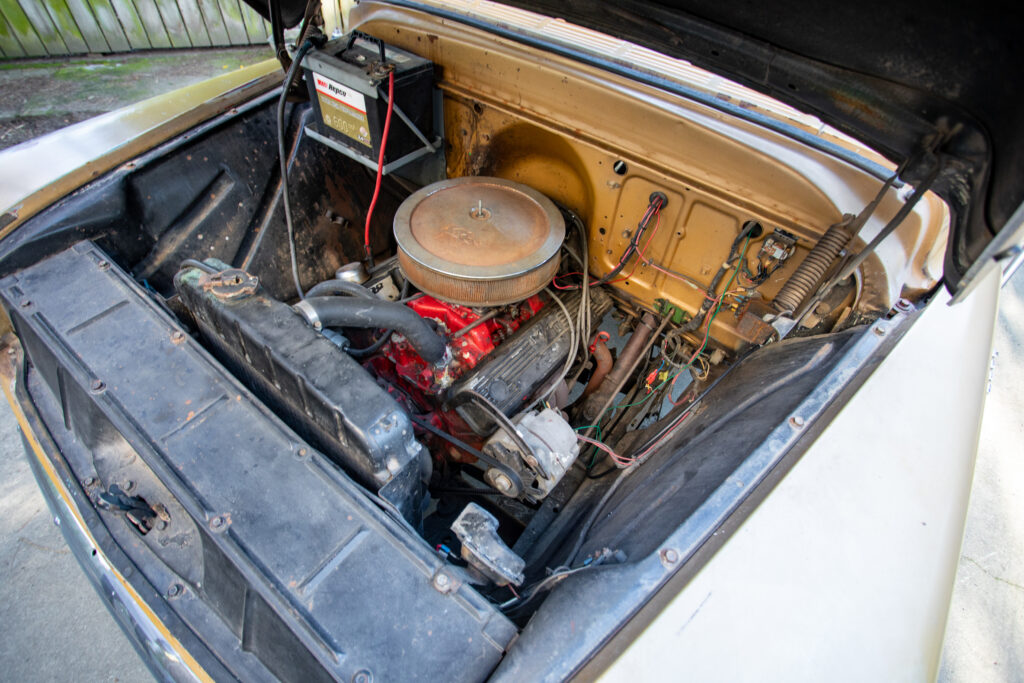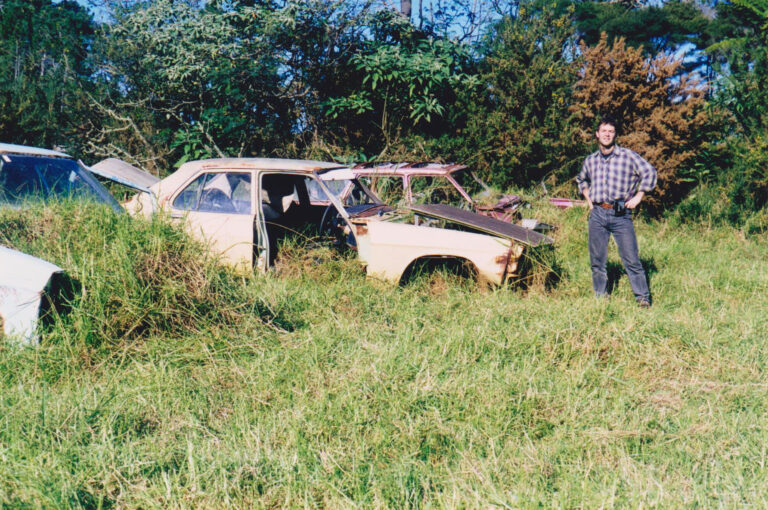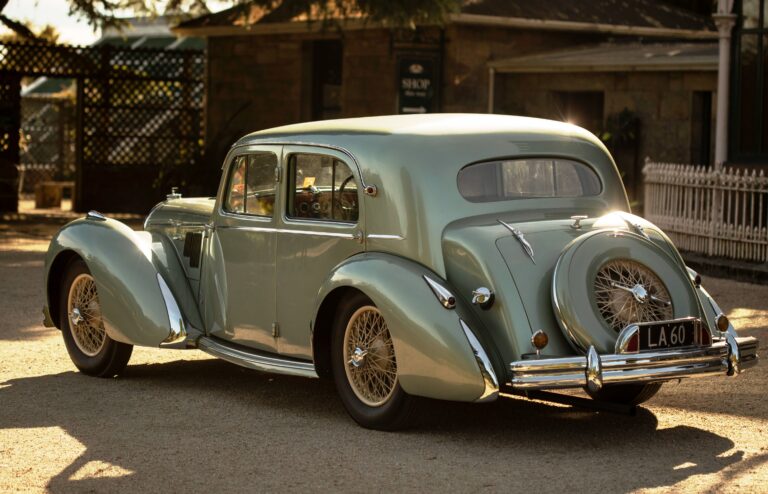Long before pickup trucks became fashion items they, like the Levi jeans their owners wore, were built for hard work. After 30 years in a shed, this one is back in harness
By Vaughan Wilson, photography Aaron Mai

In 1955 General Motors released their Chevrolet and GMC pickup trucks, the second generation since the end of the war. As with previous generations, the 3100 model was the half-ton and a short bed; the 3600 was the three-quarter ton with a long bed. GMC and Chevy also released a model called the 3200, being a long-bed version with the thicker frame of the 3600 but only the suspension of the half-ton. Our subject vehicle here wears the 3200 badges but it is in fact a 3100 model.
While the GMC and Chevies look much the same, the GMCs were more squarely aimed at commercial customers and over the years have featured stronger brakes, suspension, and transmissions, as well as a slightly higher level of trim for the extra cost.
The half-ton truck here is a four-wheel drive 1955 Chevrolet owned by Murray Robinson, a car enthusiast who has owned many American cars, following the footsteps of his parents who have owned even more. Murray’s first car was a 1952 Chevrolet which he still owns. He also owns a 1956 panel truck that featured in the Daily Driver section of a recent issue of New Zealand Classic Car.
The ’55-’59 Task Force pickups and trucks which also featured a panel van and station wagon in the range have always been popular and downright cool. They were among the first to offer car-like interior comfort and room, as well as stylish signatures like wraparound screens, funky headlight surrounds, and a toothy chromed grin.
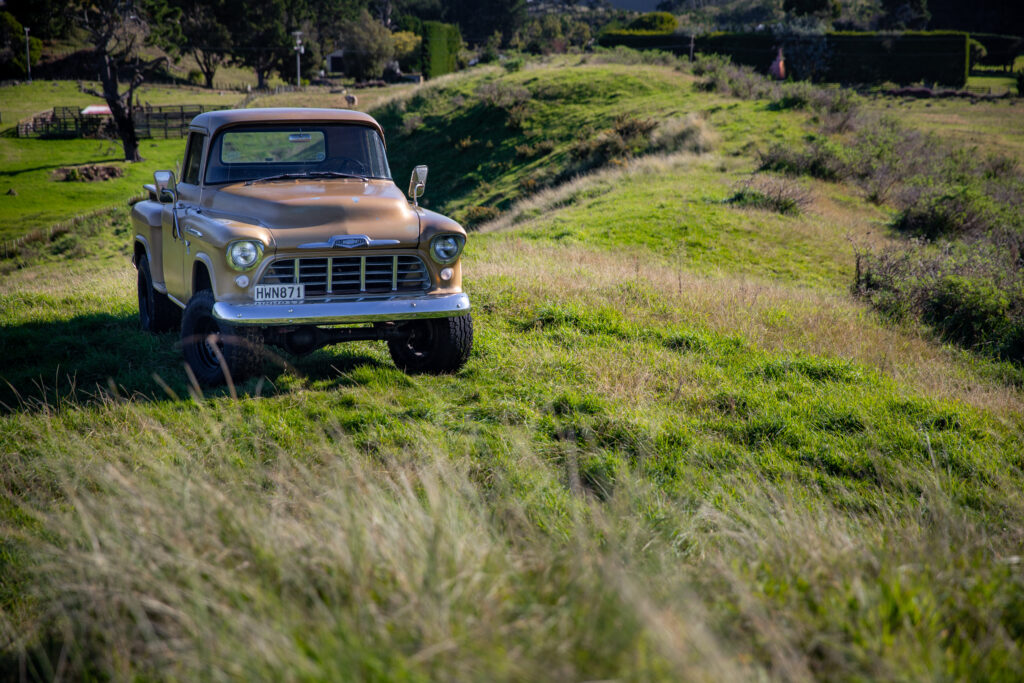
You want four-wheel what?
What a lot of people don’t know is that four-wheel drive was a rarity on early US trucks and pickups. Sure, they had vehicles like the Dodge Power Wagons, a hangover from US military production during World War II. They were originally built for the rigours of the battlefield in deserts and muddy roads, much the same way the Jeep was.
Yet in the early 1950s this level of off-road capability was not available from the factories even though returned servicemen who had experienced four-wheel drive wanted it at home on the farm. Initially Ford, Dodge, and Chevrolet offered it as an aftermarket add-on, usually at the dealership or at a specialist.
Ford outsourced this work to Marmon-Herrington (M-H) for conversions of their pickups using a Dana 44 closed knuckle front axle. Ford only started offering four-wheel drive as a factory option from 1959.
Chevrolet had a similar arrangement with a company called Napco (Northwestern Auto Parts Company). Napco was a small upfitter from Minneapolis that began life in 1918. During World War II, it was contracted to provide four-wheel drive systems, dump truck bodies, transmissions, winches, and other items, so after the war, it carried on specialising in providing a Powr-Pak 4×4 conversion for GMC and Chevy pickups to meet the new demand. It was sold to customers via GM dealers and Napco shops for $995 in the 1940s. Seems pretty reasonable but a whole new pickup truck cost around $1500 back then.
The Powr-Pak was simple and easy to install utilising 85 percent GM parts. A GMC or Chevrolet pickup truck could be converted to four-wheel drive by drilling four holes into the frame and modifying the front axles. The transfer case was connected to the truck’s transmission.
Four-by-four by Napco
Until the arrival of the second generation in 1955, only one ton and three-quarter ton GMC and Chevrolet trucks could be converted using the Napco kit. This was because the first-generation truck used a torque-tube style driveshaft which wasn’t easily adapted to the transfer case. The second-generation truck did without the torque tube set-up and so Napco conversion kits could be applied to the new half-tons too.
GMC and Chevrolet offered the half-ton kit at dealerships in 1956 and by 1957 the entire kit could be installed at the dealership. In 1960, the pickup truck was redesigned to include four-wheel drive as standard from the factory. Napco continued to produce conversion kits for large trucks but it was bought out by the Dana Axle Company in the 1960s. Four-wheel drive Ford Broncos, International Scouts, and Chevrolet Blazers followed soon after.
Murray and his late father bought this truck, a 1/2 ton step side body style with a wheel base of 114 inches, from a chap in Wellington in 2014. It had recently come into New Zealand from the USA where it had been stored in a barn for over 30 years. The brakes were rebuilt and the 15×8 aftermarket rims fitted with 32X11.5 Falken Wildpeak A/T tyres.
At some stage the original engine had been swapped out for a 350 Chev small block with M/T valve covers and a 600 Edelbrock carb and intake that delivers a healthy level of power.
The engine is largely stock with a Chevy HEI distributor and some rusty but trustworthy headers.
The transmission is a heavy-duty synchromesh 4-speed on the floor along with the four-wheel drive selector. The rear diff has a 4.11:1 ratio and it is believed that the front diff is a modified version of the same. Both need to be tough as nails to cope with the rough and tumble owners threw at it off the beaten track. There are free-wheeling front hubs typical of the technology of the time for engaging four-wheel drive.
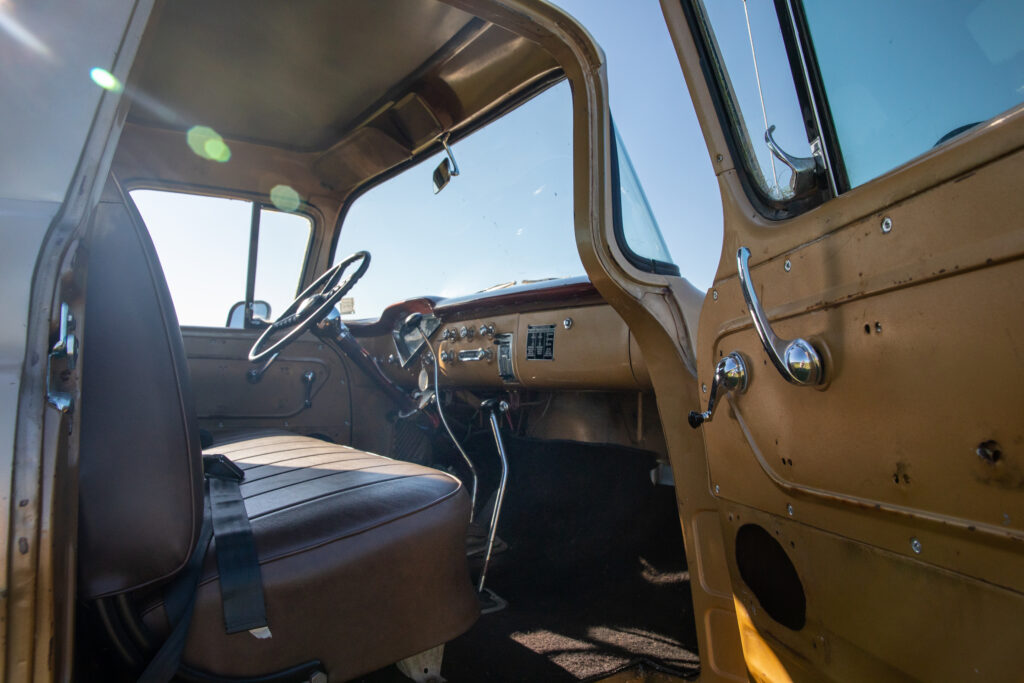
Customs went a bit nuts
Apparently, when it landed in New Zealand, customs smashed out the wooden deck looking for snakes, drugs, insects, or other unwanted immigrants. None were found.
Murray is a seasoned panel and paint man and runs The Shed Panelbeaters so he was well-placed to upgrade the panels and paint on the truck. Murray removed the step side and had the chassis blasted. He then painted the chassis black and friend Mike Khull cut out and fitted the new timber for the deck. While getting ready for vinning, Bim Oxnam removed some dodgy house wiring from under the dash and engine bay and replaced it with proper motor vehicle wiring.
Murray repaired some rust, installed seat belts, and fitted new mufflers to make the most of its rumbling V8. Although he makes his living from spray painting and body preparation, he decided to leave this vehicle as is, in a gentle patina. To do this properly meant Murray had to sand the truck down and cover it with a two-pack clear coat with a flattening additive to kill the shine and to protect the patina.
The seats and hood lining was completed by Ross at Foxton Auto and Marine Interiors.

Passing modestly
Murray had it street legal by mid-January 2015. It cruises nicely at 60mph and has enough poke to pull out and pass but with the modesty that’s appropriate to sitting tall in the saddle on suspension that was designed 70 years ago. Last year Murray’s nephew Dominic Cooper rebuilt the rear diff.
Murray is not aware of any other Napco 1955 Chevrolet pickups in New Zealand and even in the good ole US of A they are rare. These trucks were built to work hard in rugged country. When they were pensioned off, they were either scrapped or bought second hand for more hard treatment by hunters and four-wheel drive enthusiasts of the time.
This truck is in great original condition and its original Napco parts are still on the truck and the various add-on parts are emblazoned as such. Napco was good enough to supply a riveted panel for the dashboard so owners would know which gear position was what, given the lack of knowledge of four-wheel drive at the time.
Murray uses his truck every week and it gets to haul engine and car parts on a regular basis. Its working interior and exterior means Murray doesn’t have to worry about it getting scratched or dirty. However, he has been working on a number of film sets in and around Wellington of late and some of his American vehicles have been used to suggest American settings. The truck has just been used in Ti West’s upcoming horror movie X.
Murray doesn’t intend to change anything on the truck but he would like to thank his wife Sue for allowing him to have so many cool cars and trucks, and a car shed bigger than their house.
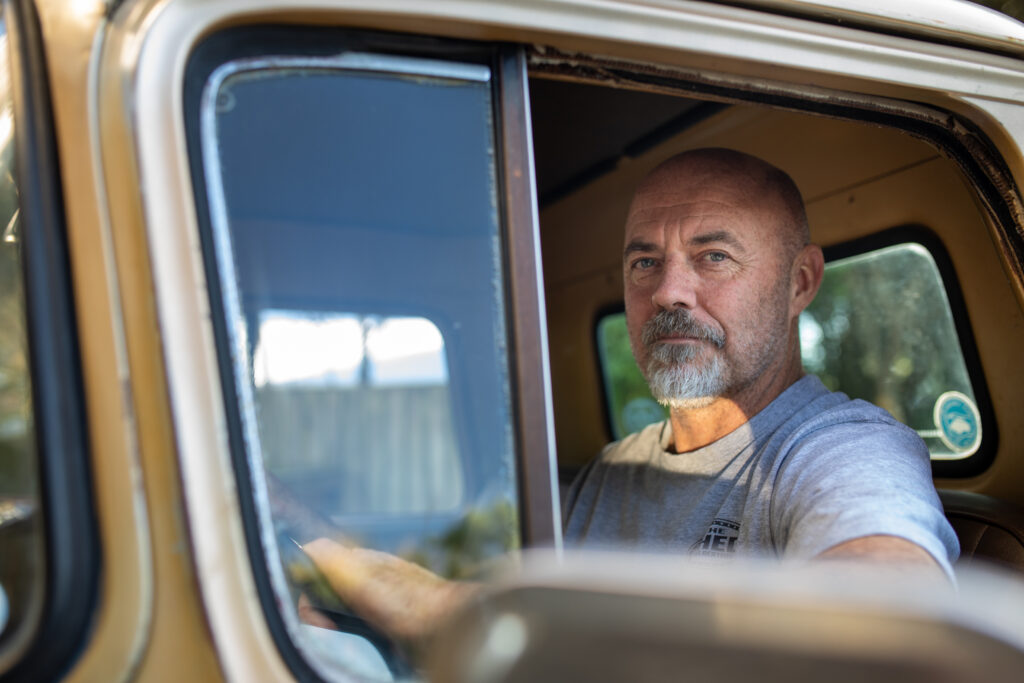
Specs – 1955 Chevrolet Pickup
Engine: Chevrolet V8 (as featured)
Capacity: 5700cc (as featured)
Bore/stroke: 101.6 x 88.39mm
Valves: Two valves per cylinder
Max power: 180kW approx
Fuel system: Four barrel 600cfm Edelbrock carburettor
Transmission: Heavy-duty synchromesh 4-speed with four-wheel drive selector
Suspension F/R: Reverse Elliot type ‘I’ beam, semi-elliptic leaf springs, double- action shock absorbers / semi-elliptic, two-stage leaf spring, direct double-action shock absorber.
Napco (Northwestern Auto Parts Company) Powr-Pak 4×4 as featured
Steering: Recirculating ball
Brakes: Hydraulic drum
Dimensions
Overall length: 4717mm
Width: 1930mm
Wheelbase: 2896mm
Kerb weight: 1456kg
Performance: N/A
